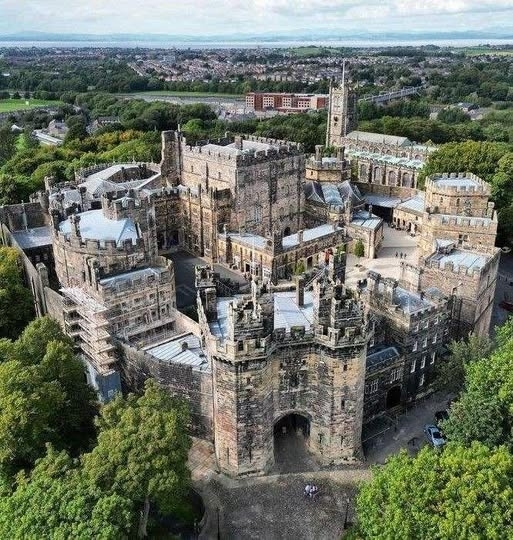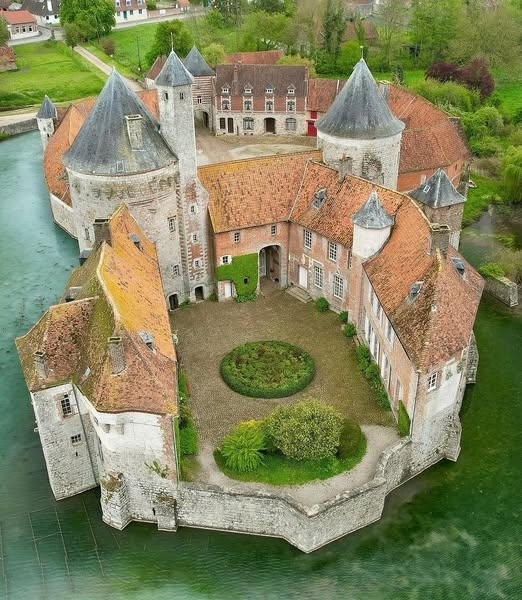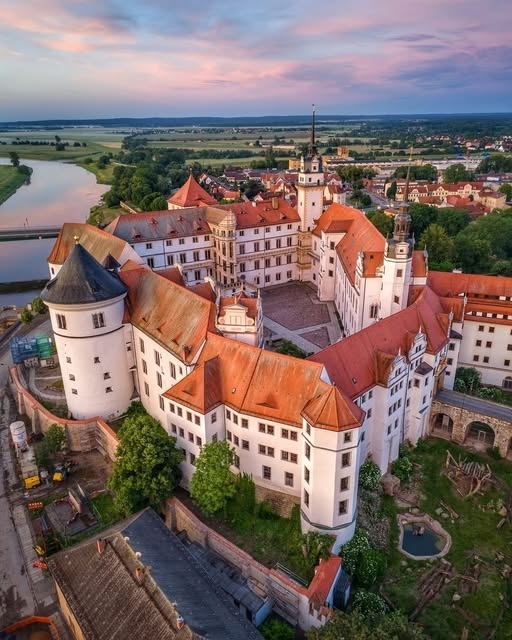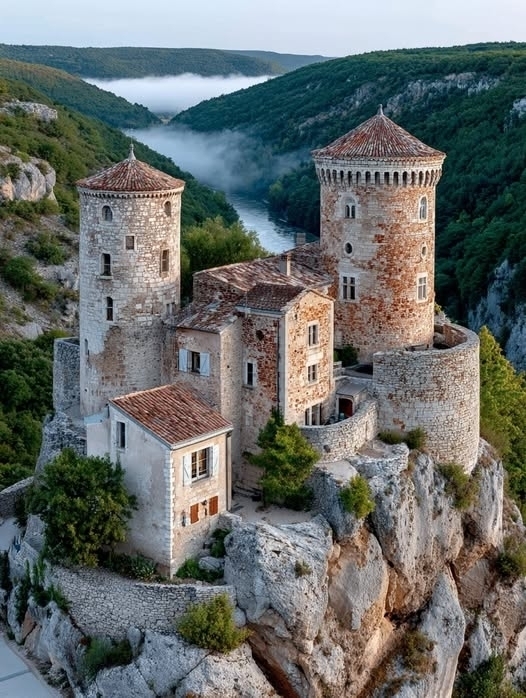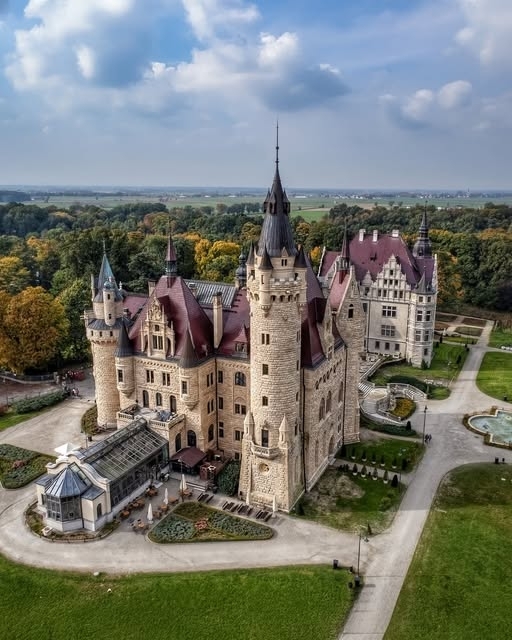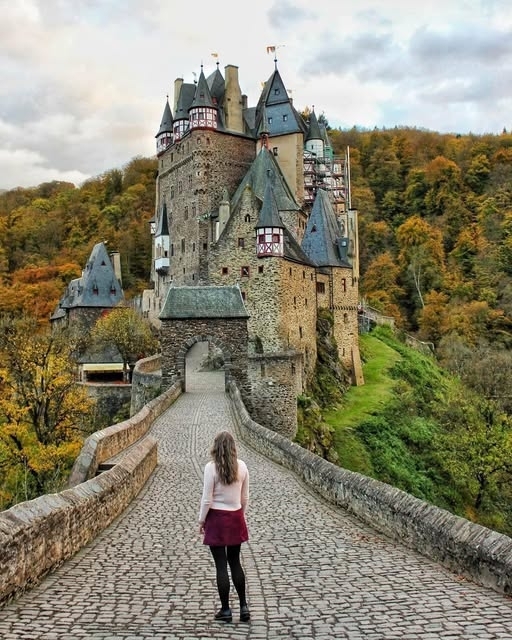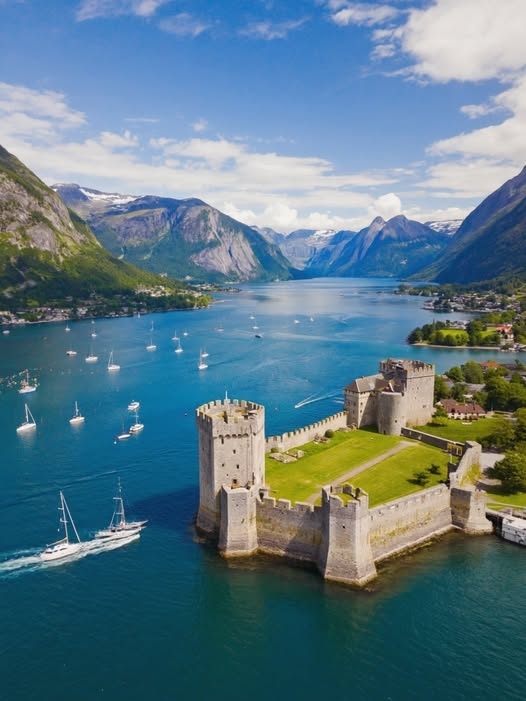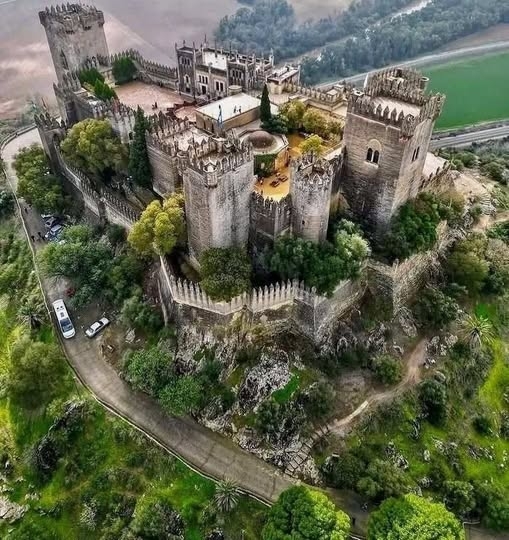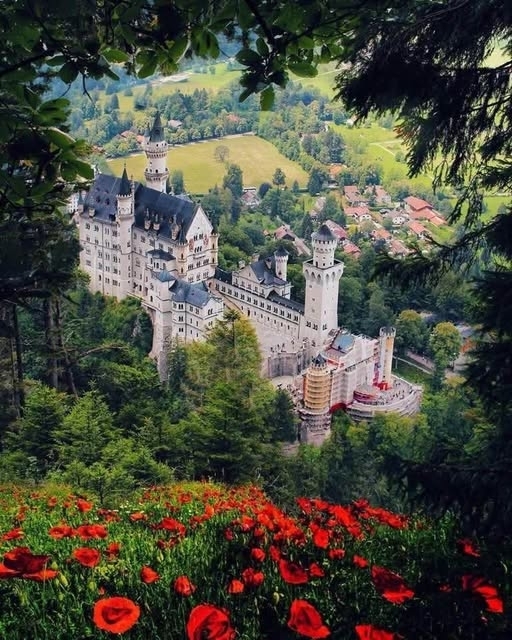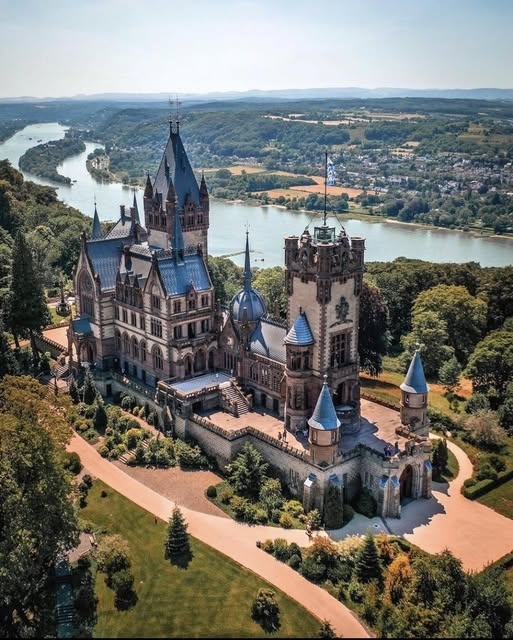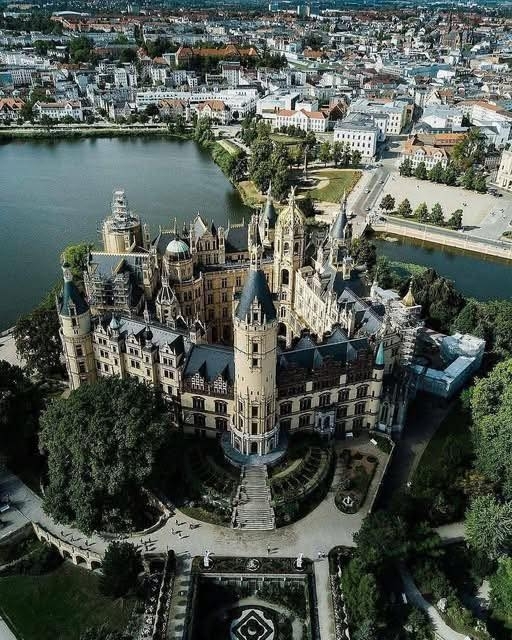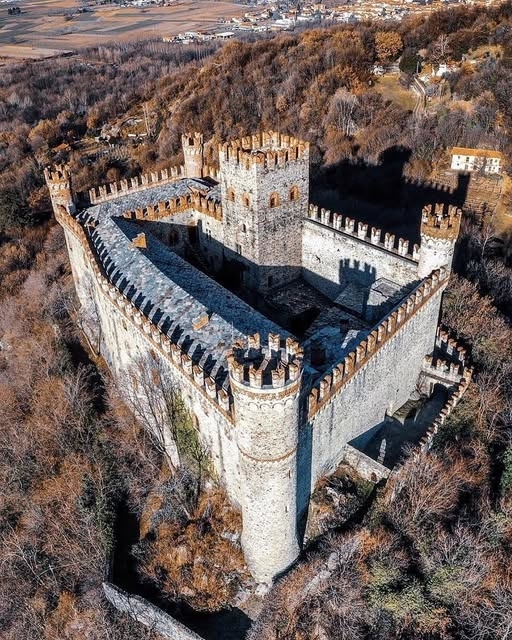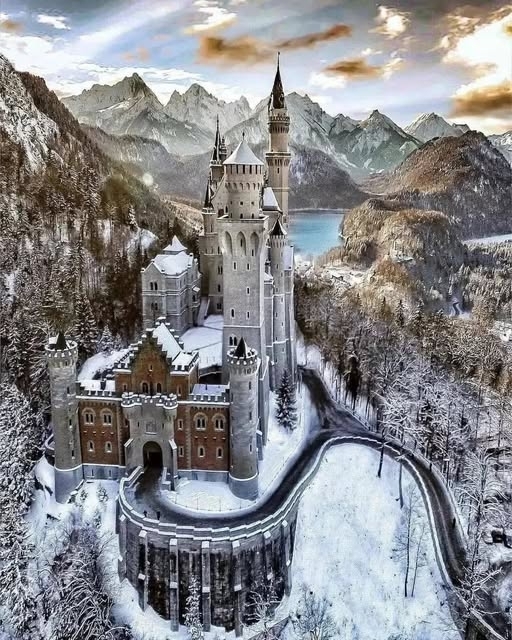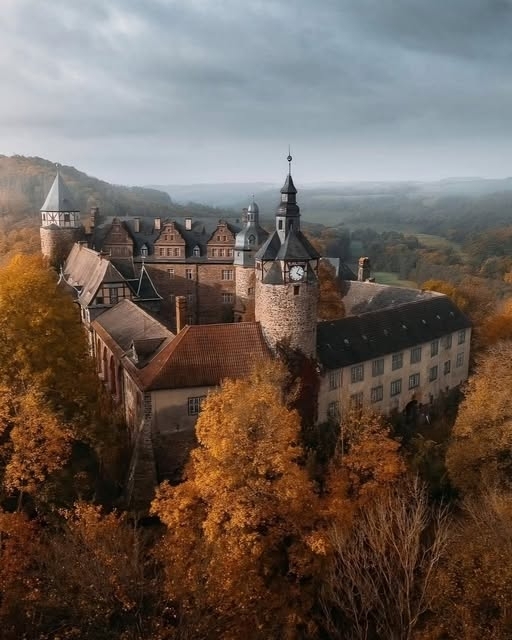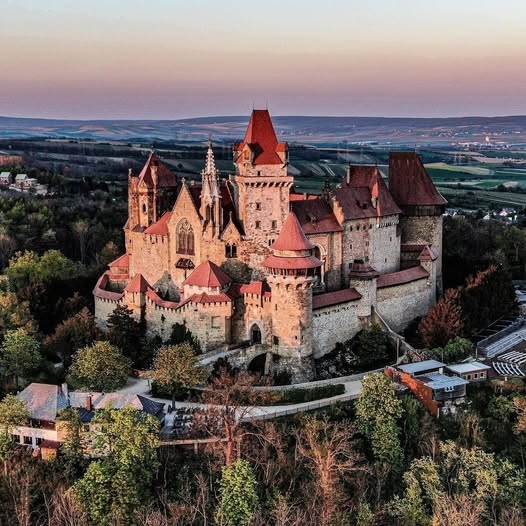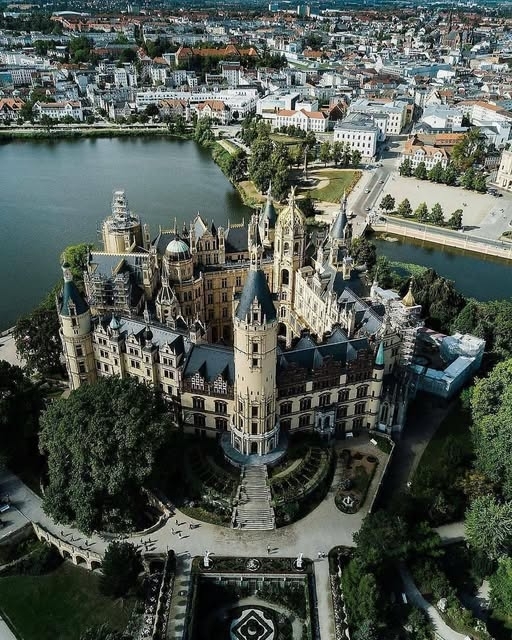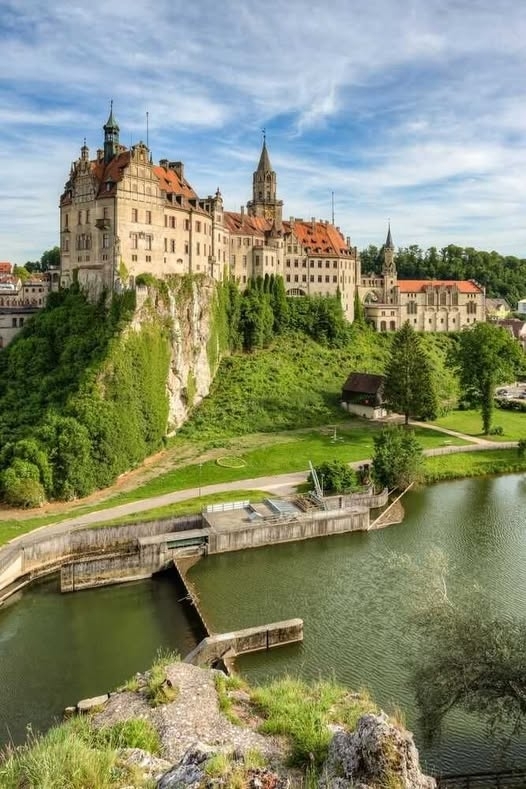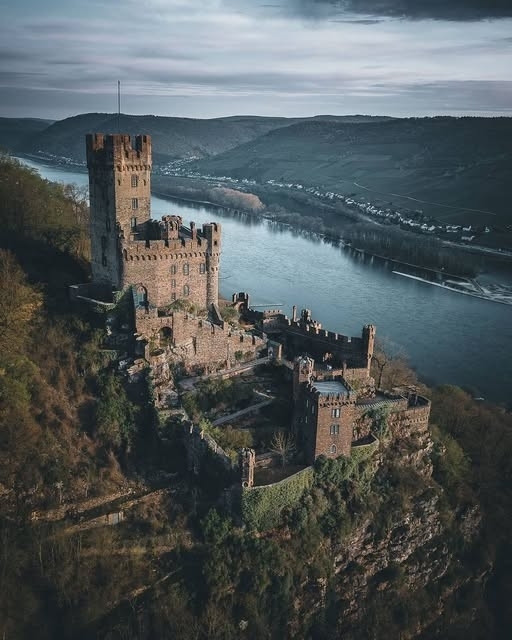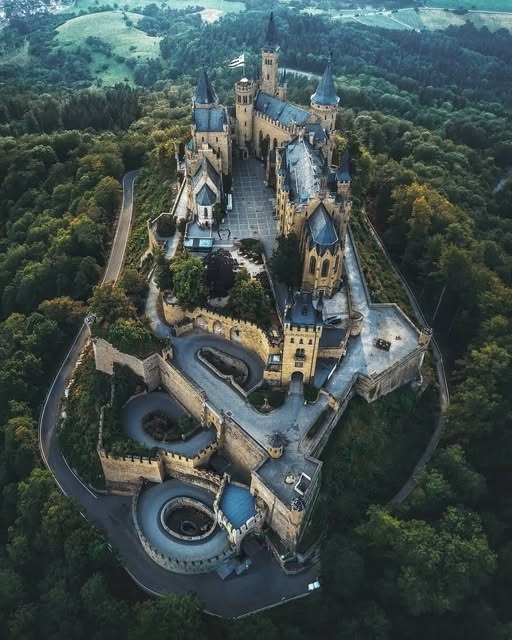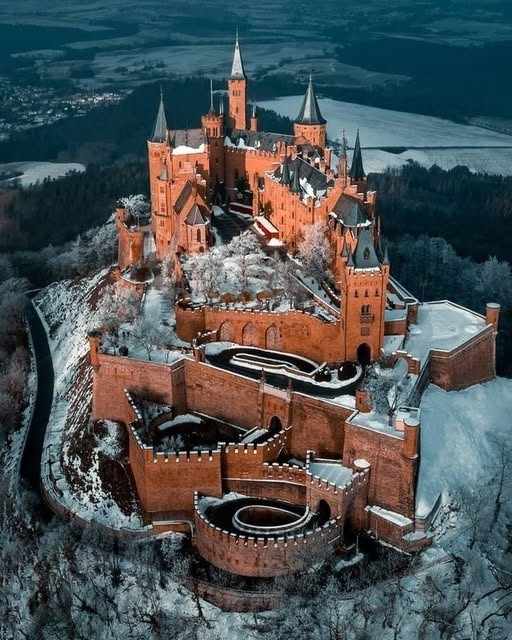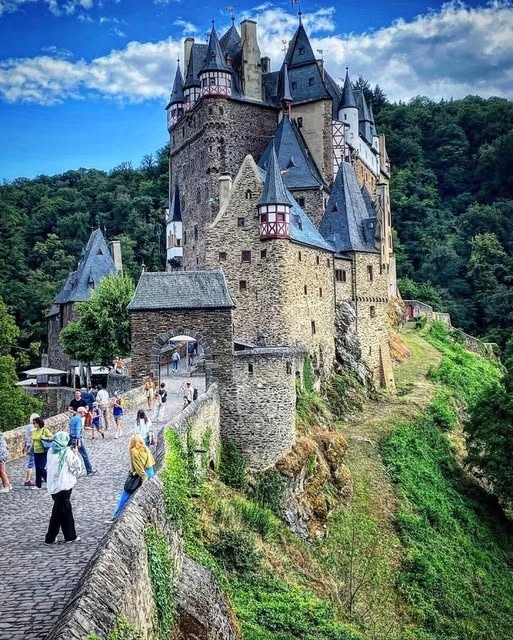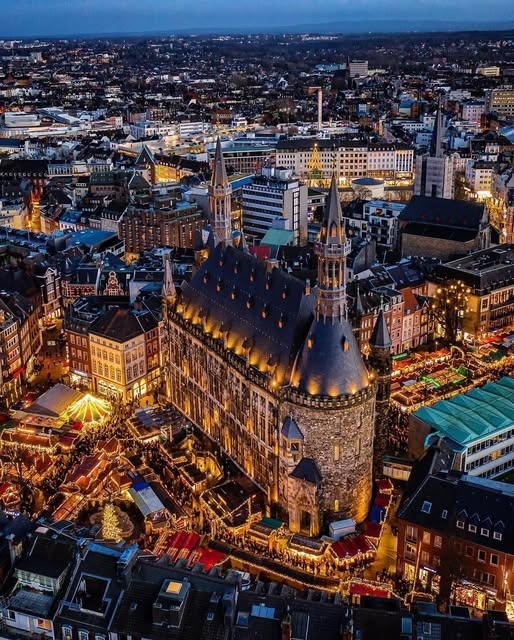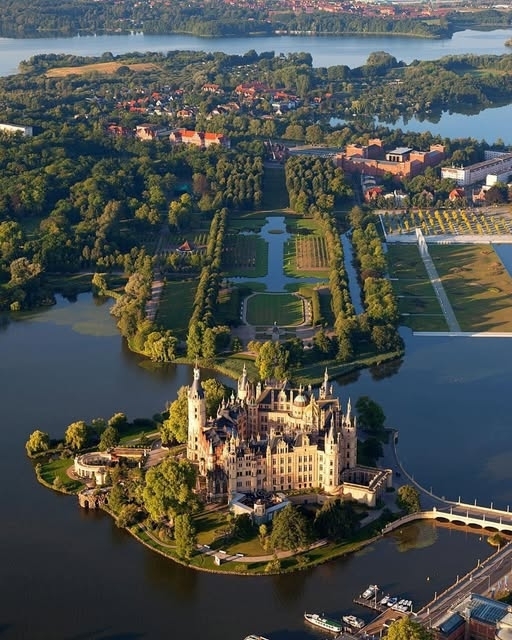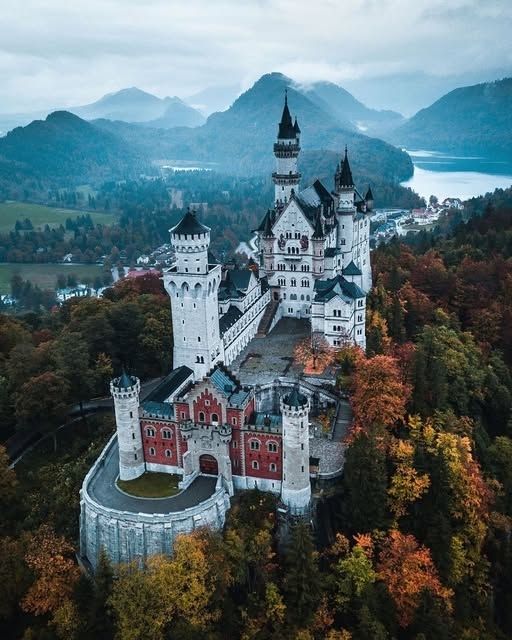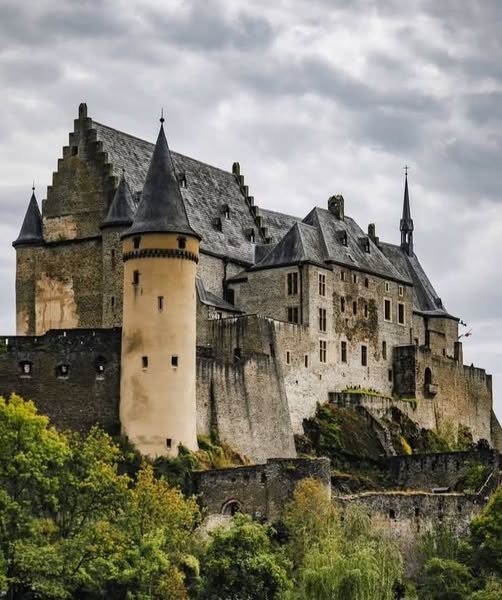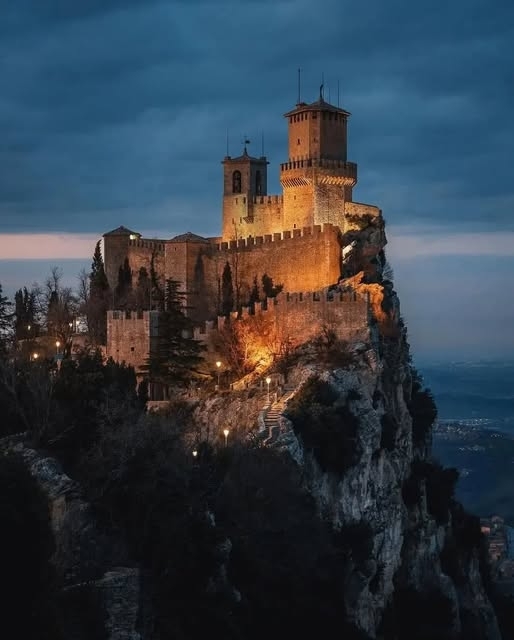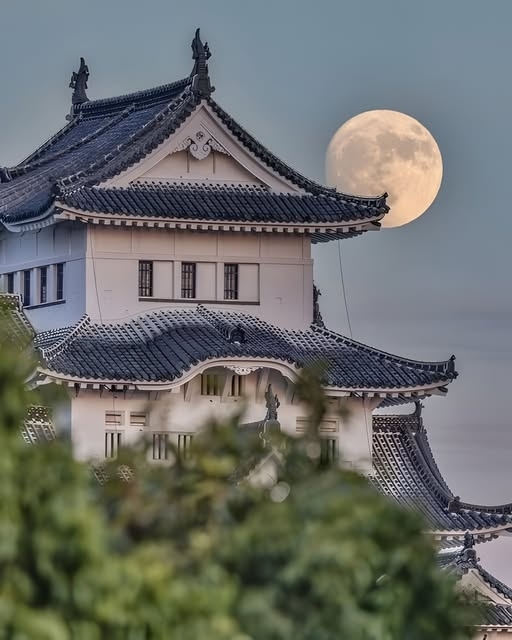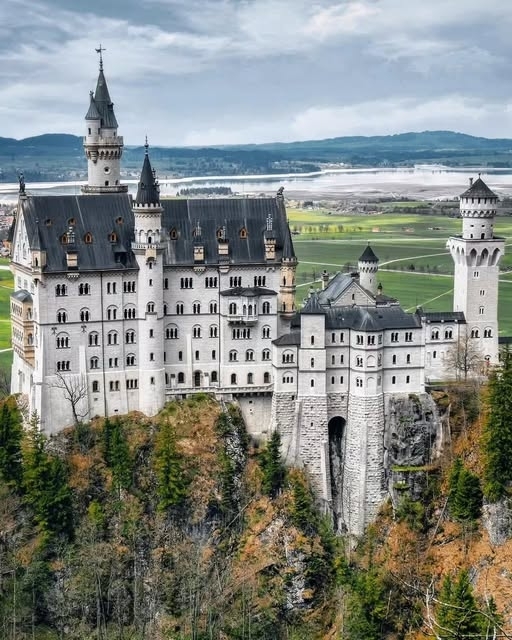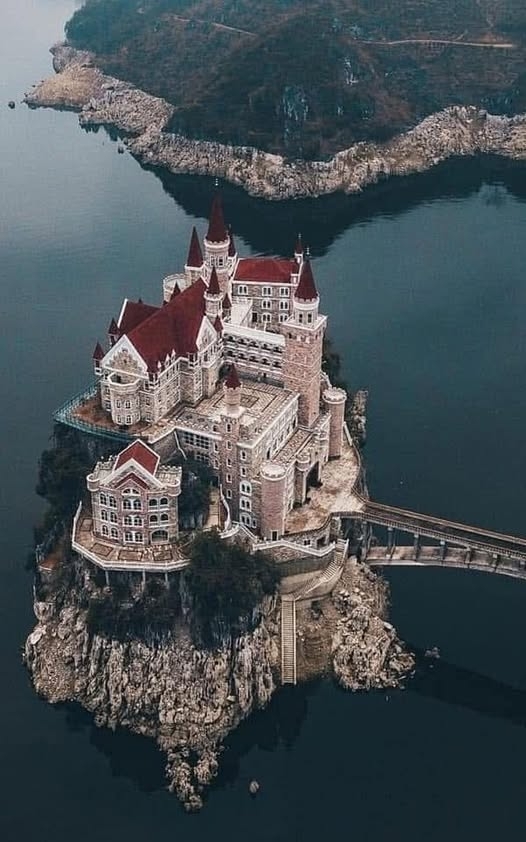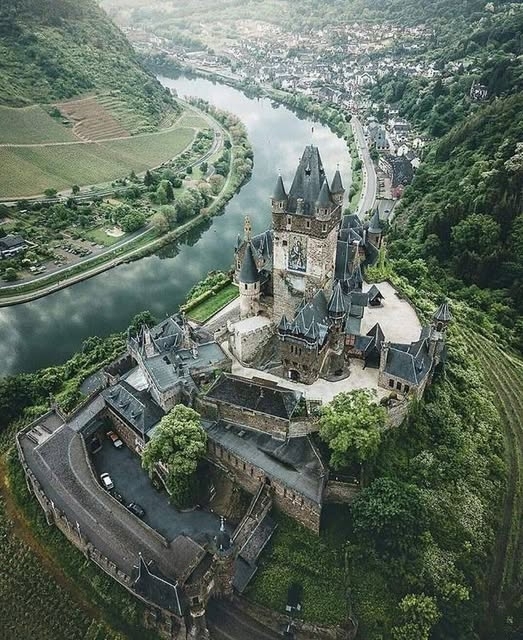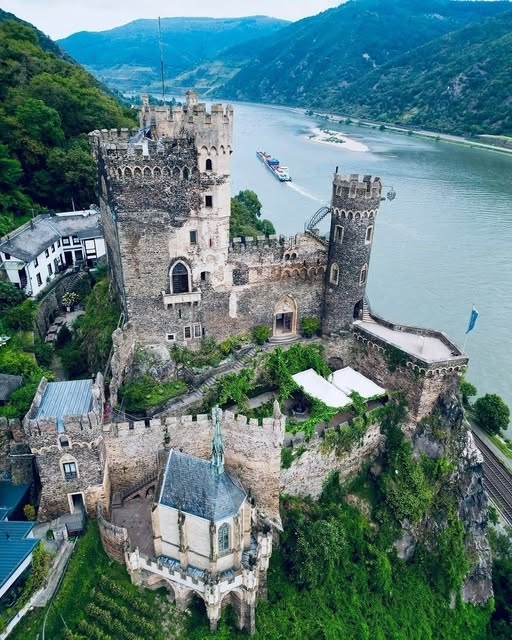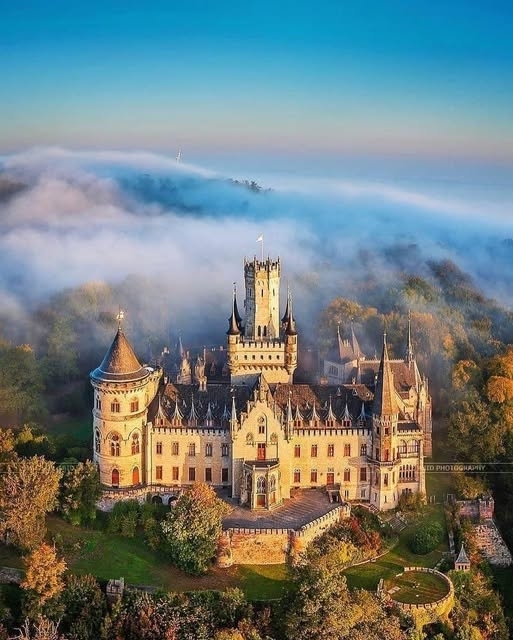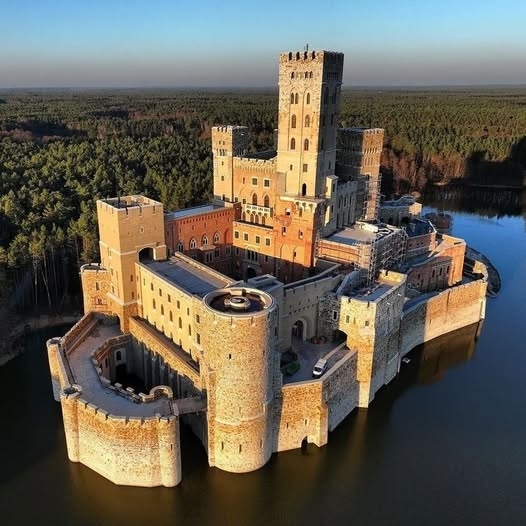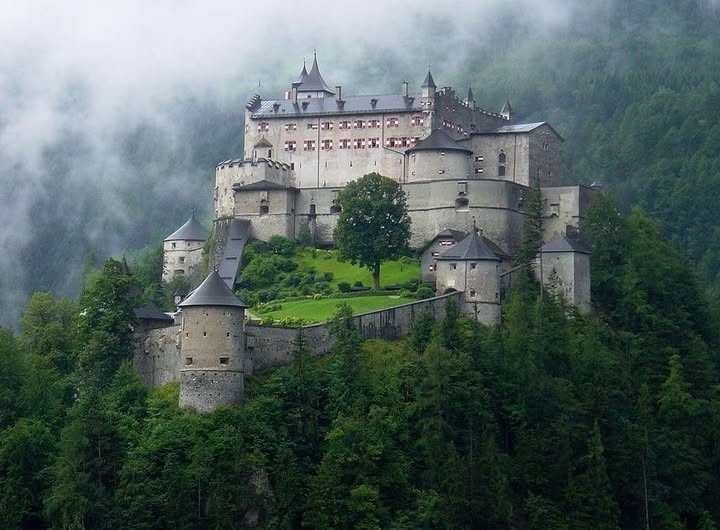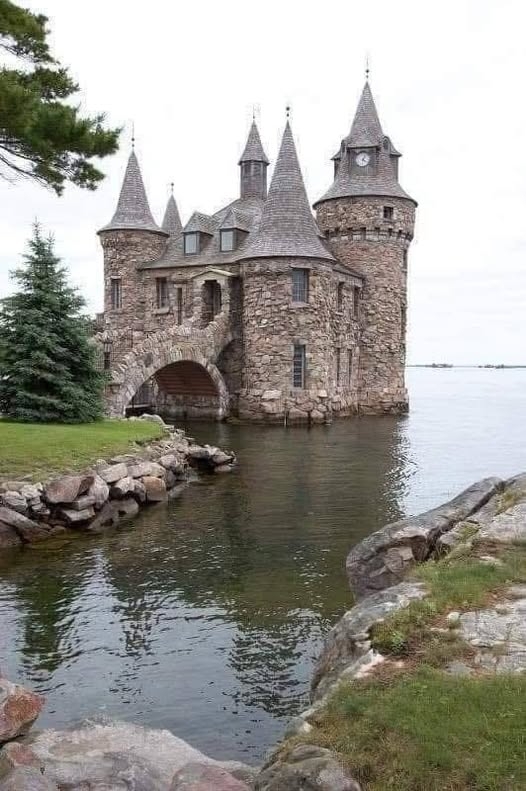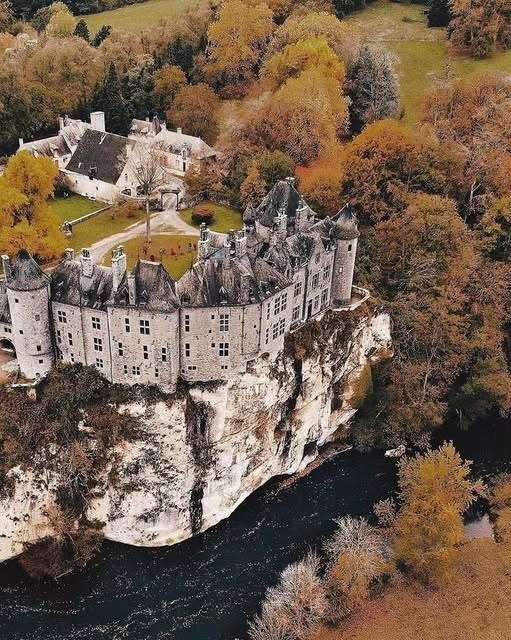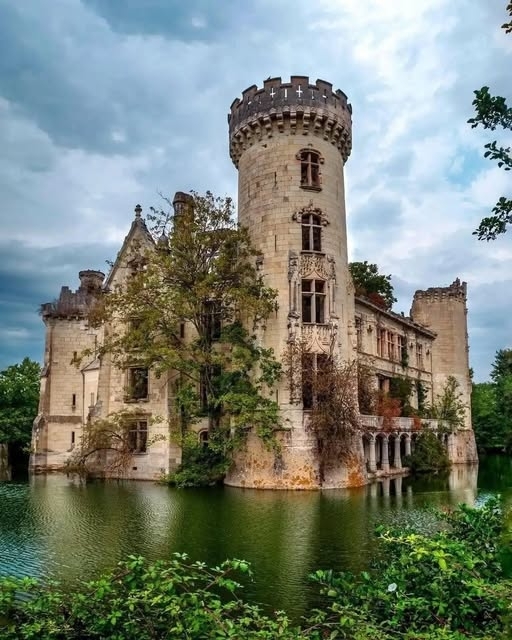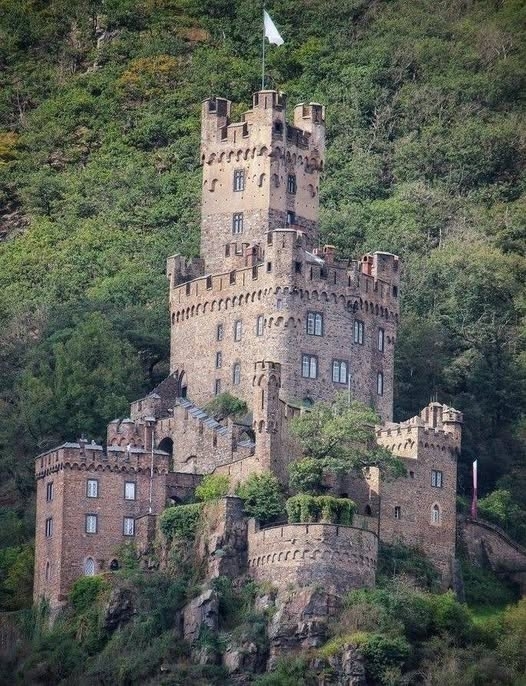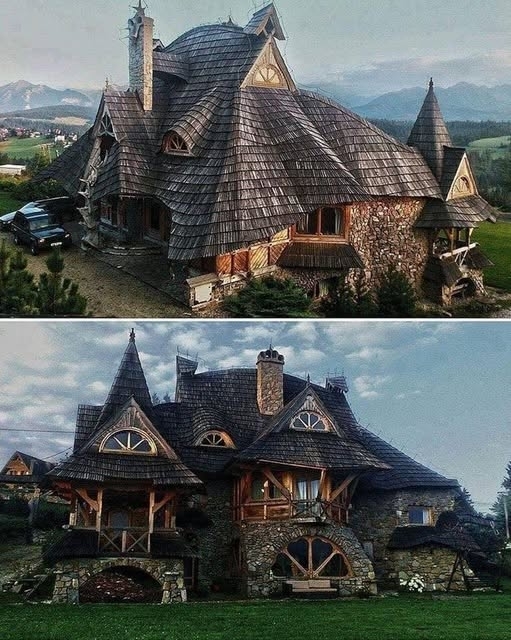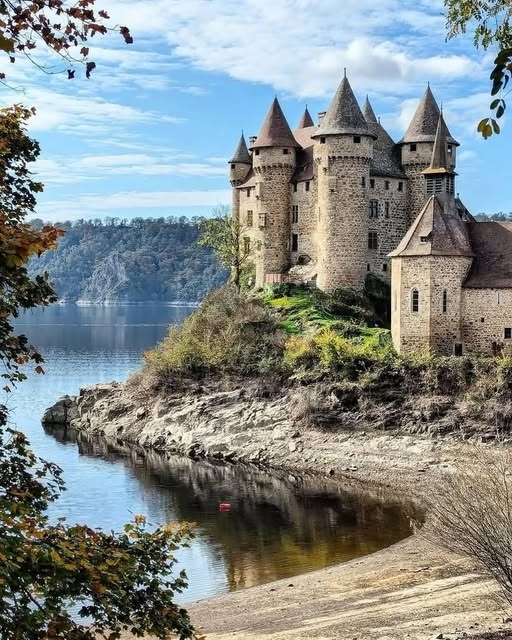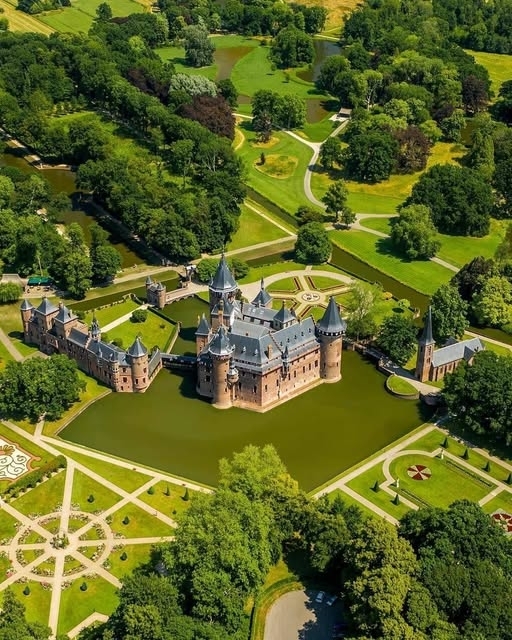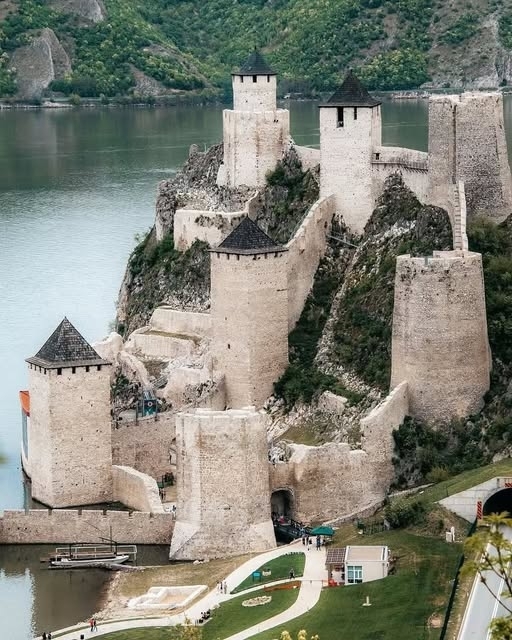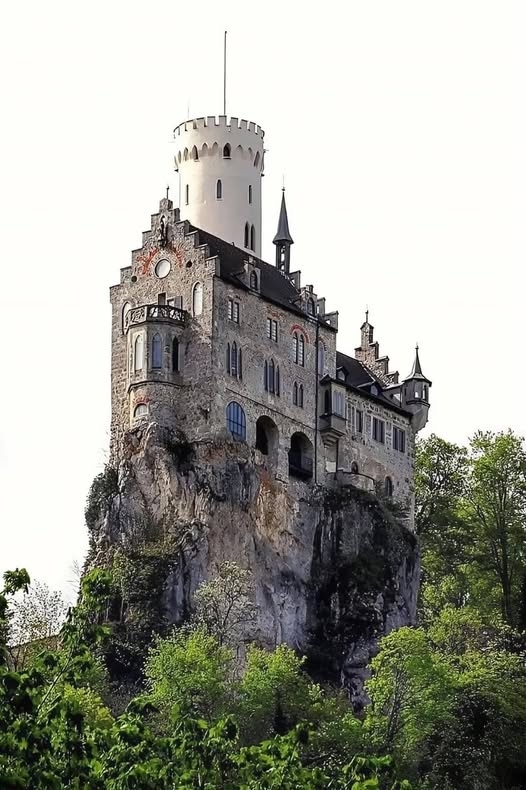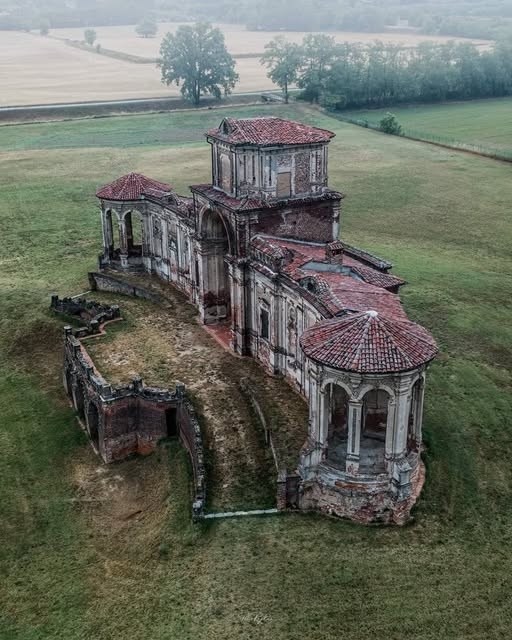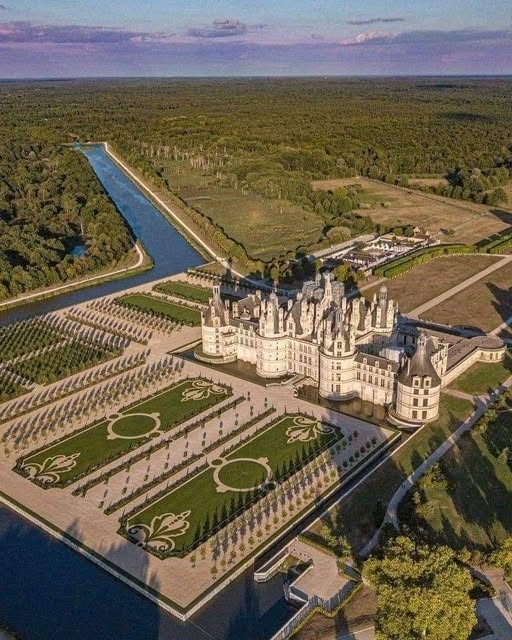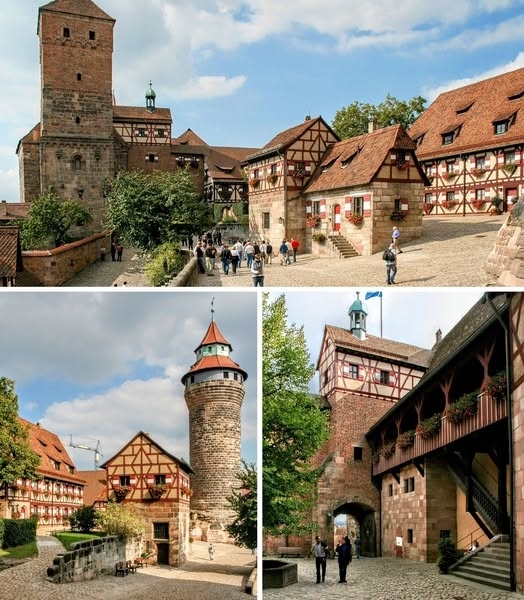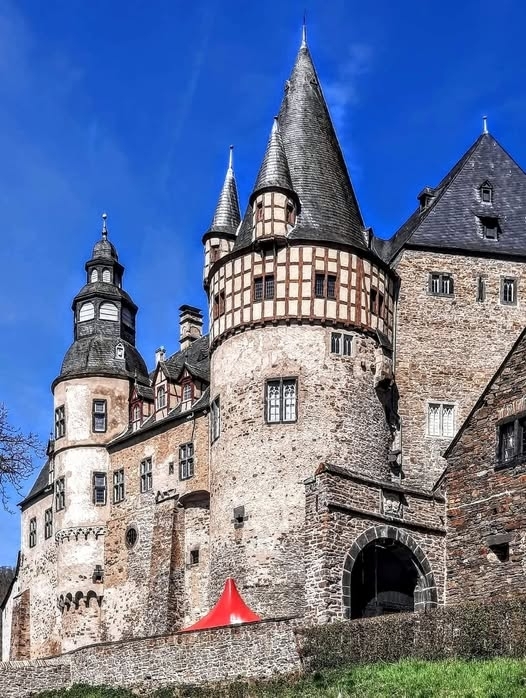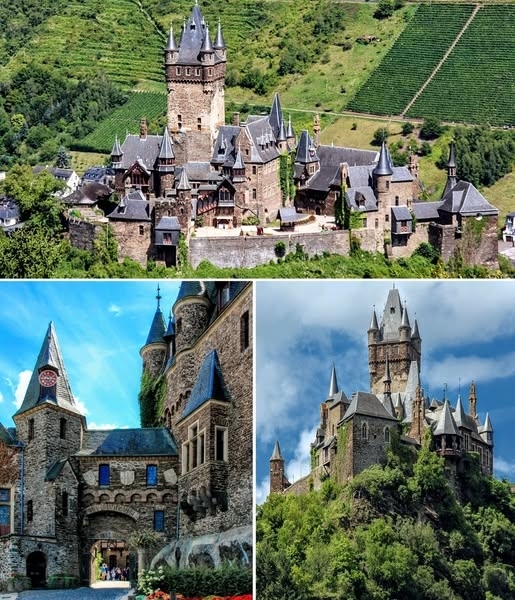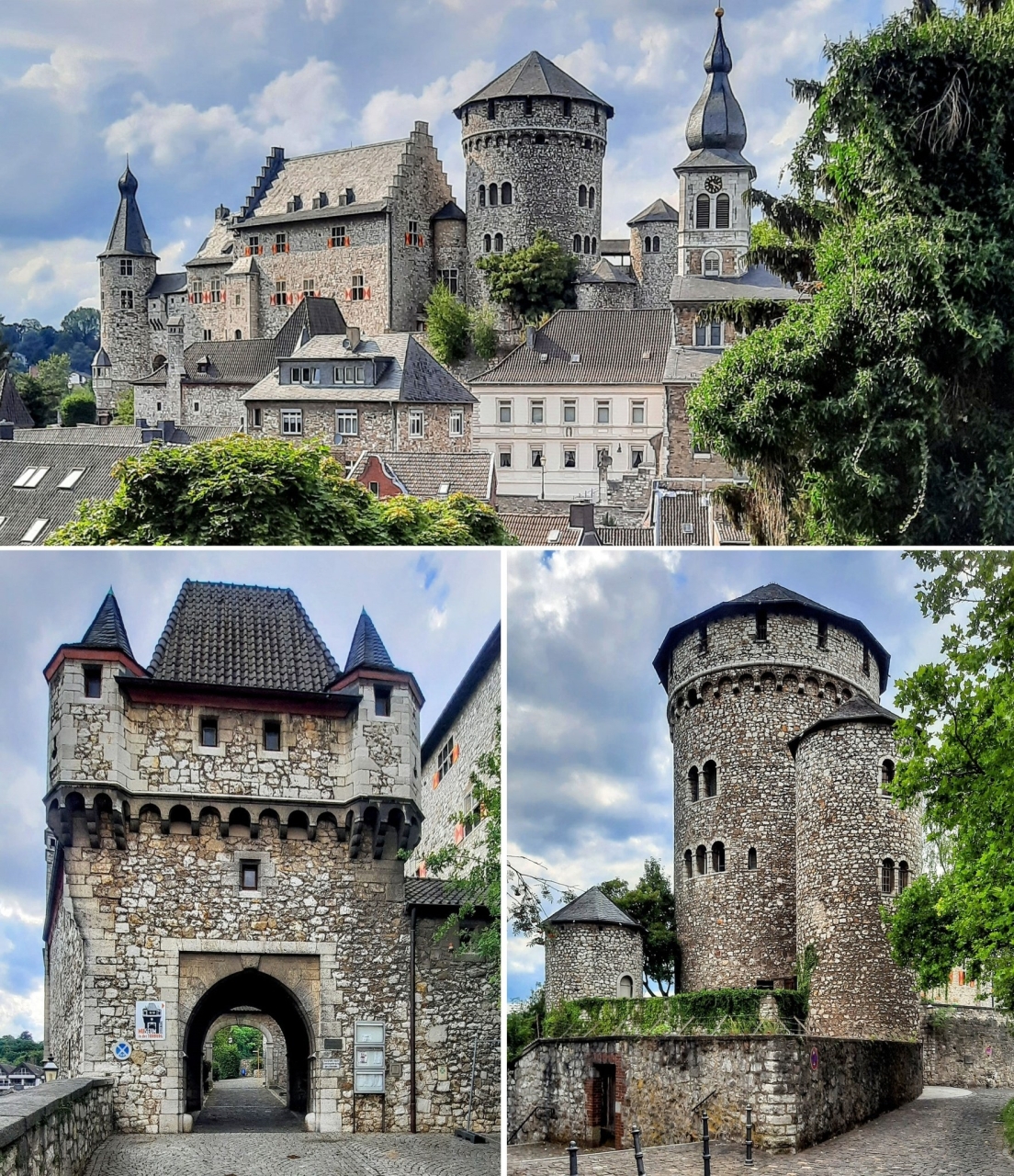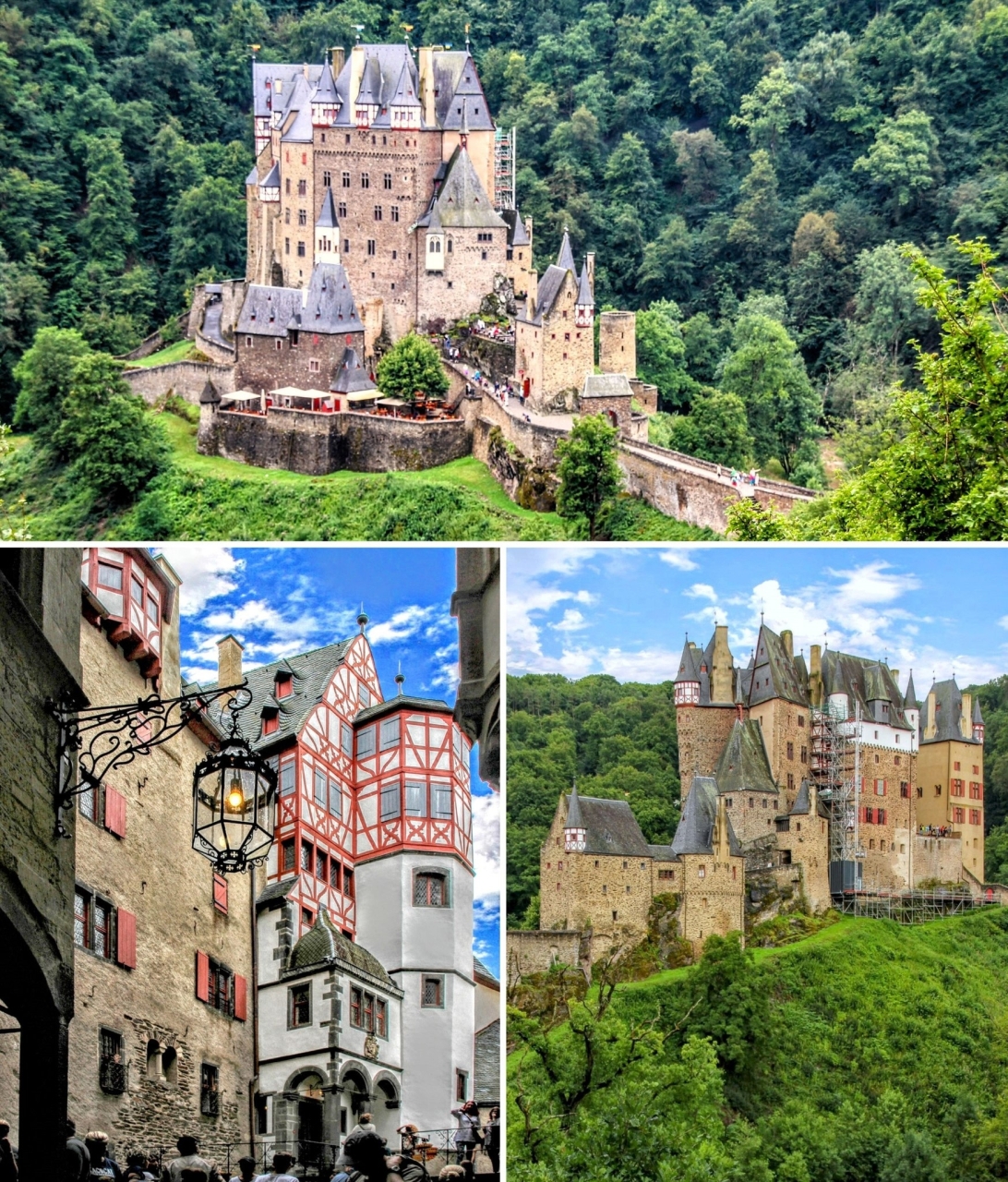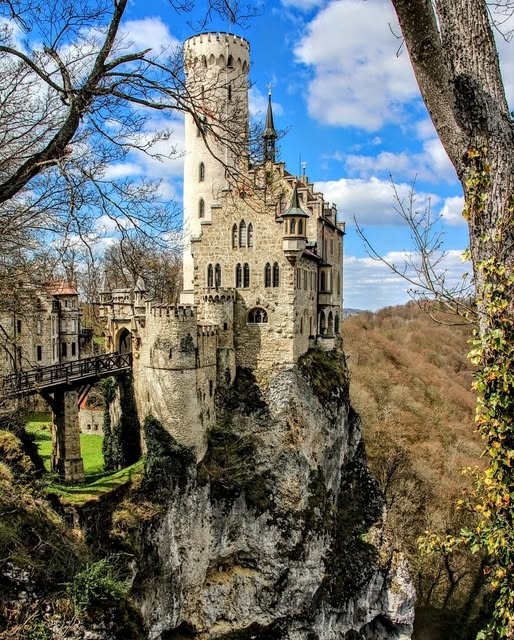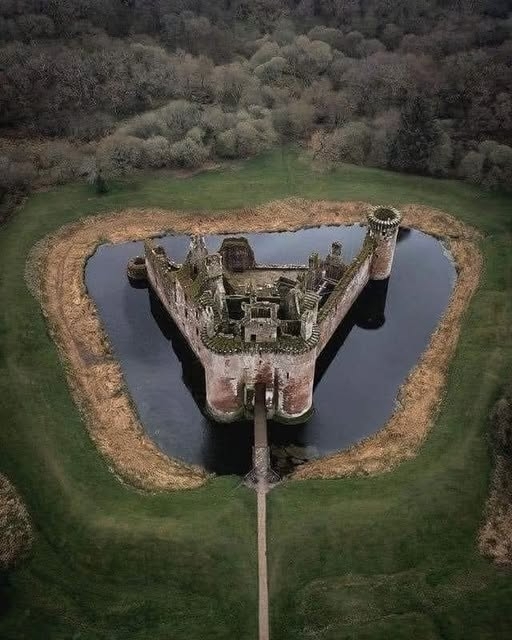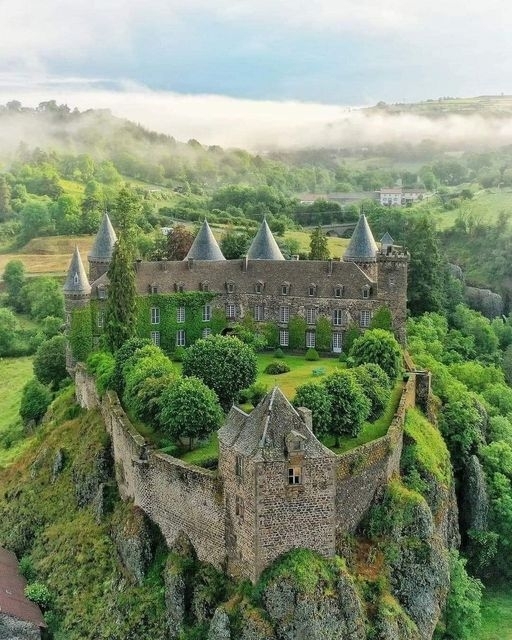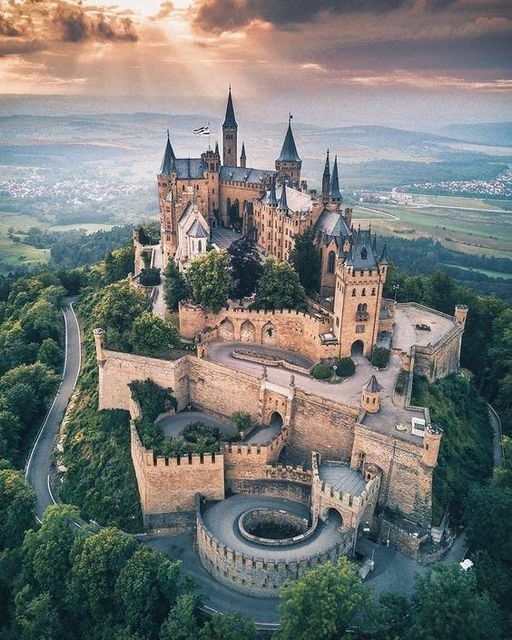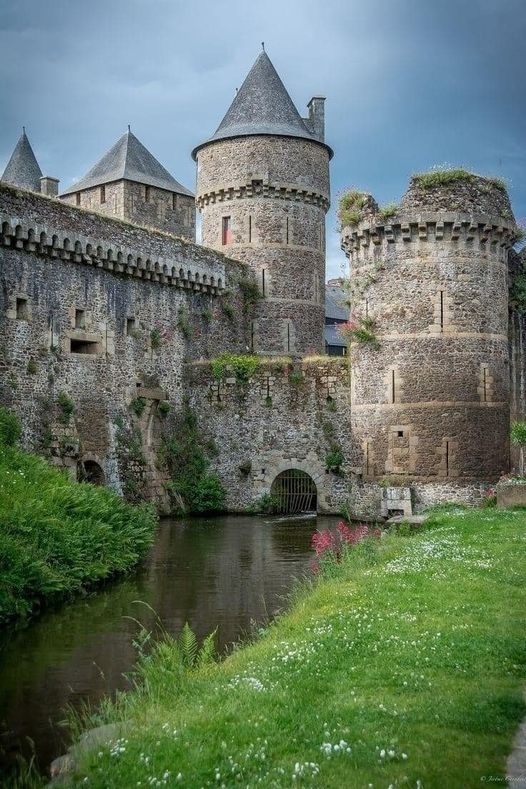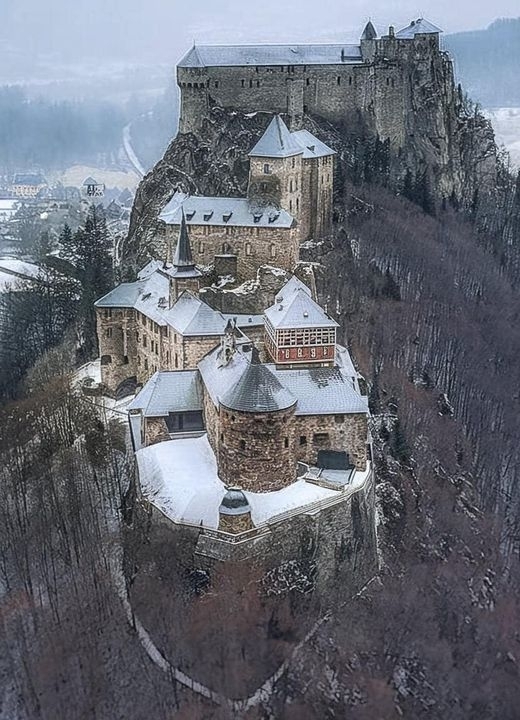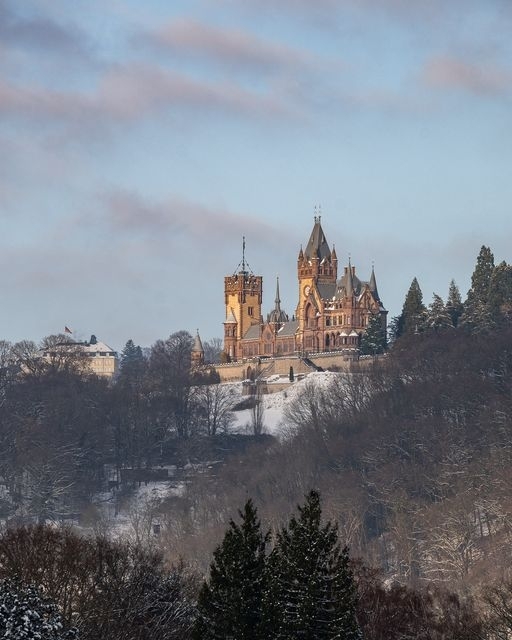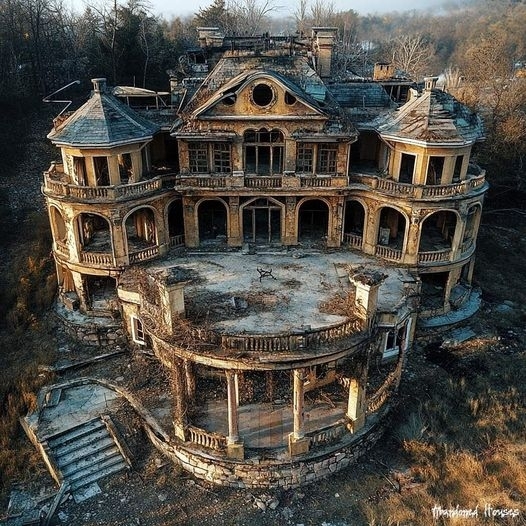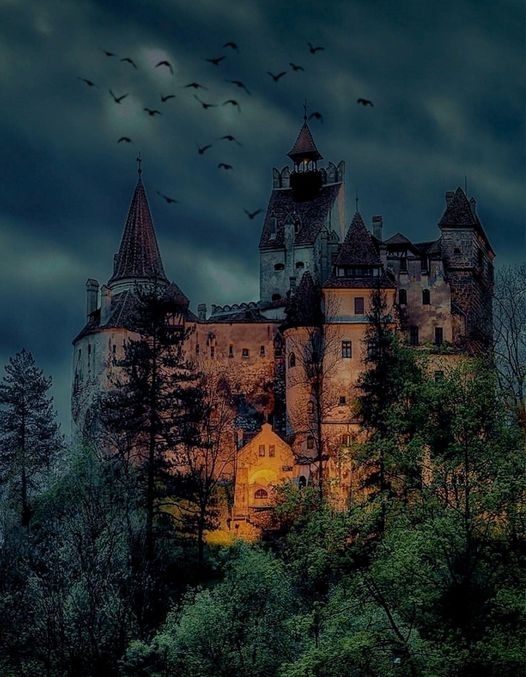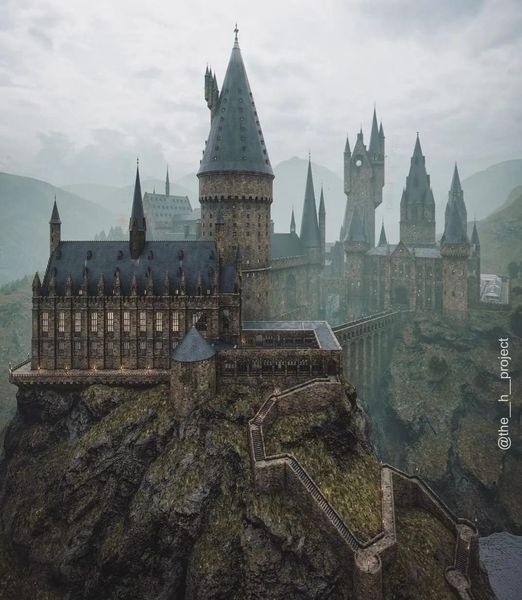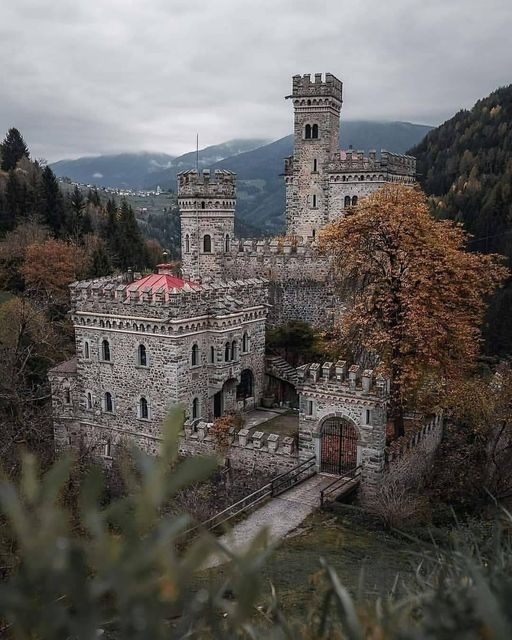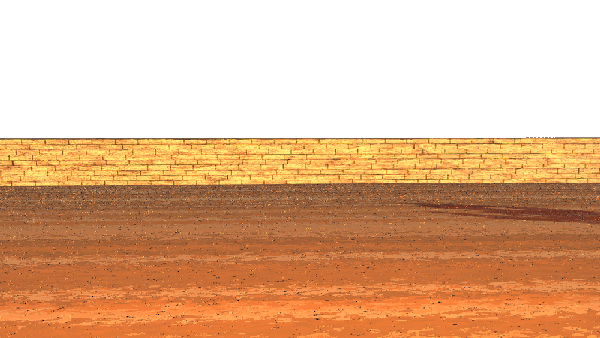is a medieval castle and former prison in Lancaster in the English county of Lancashire. Its early history is unclear, but it may have been founded in the 11th century on the site of a Roman fort overlooking a crossing of the River Lune.
Architect...
Architect...
is a medieval castle and former prison in Lancaster in the English county of Lancashire. Its early history is unclear, but it may have been founded in the 11th century on the site of a Roman fort overlooking a crossing of the River Lune.
Architect: Thomas Harrison
Mehr
Architect: Thomas Harrison
Is a 15th-century castle located in Olhain, Fresnicourt-le-Dolmen, Pas-de-Calais, Nord-Pas-de-Calais, France. The castle is located in the middle of a lake which reflects its towers and curtain walls. It was also a major stronghold for the Artois...
Is a 15th-century castle located in Olhain, Fresnicourt-le-Dolmen, Pas-de-Calais, Nord-Pas-de-Calais, France. The castle is located in the middle of a lake which reflects its towers and curtain walls. It was also a major stronghold for the Artois in medieval times and testimony to the power of the Olhain family, first mentioned from the 12th century.
Mehr
The stunning Hartenfels Castle is one of the highlights of the town of Torgau, showcasing beautiful Renaissance architecture. Its iconic spiral staircase, built without a central support, is an engineering marvel. The castle’s grand halls and...
The stunning Hartenfels Castle is one of the highlights of the town of Torgau, showcasing beautiful Renaissance architecture. Its iconic spiral staircase, built without a central support, is an engineering marvel. The castle’s grand halls and elegant facades tell the story of Saxony’s rich past – from royal power to Protestant history. A must-visit for castle lovers and history buffs alike! 🏰✨
Mehr
of a medieval castle perched on a cliff in southern France, bathed in golden sunrise light and surrounded by lush forests. A fairytale scene seen from above.
19 Juni 2025
·
vor 5 Monaten
– A Fairytale Gem with Fascinating History in Opolskie, Poland
If you've ever dreamed of a castle with 99 towers and 365 rooms straight out of a fairytale, Moszna Castle in southern Poland will captivate your heart. Originally dating back to the...
If you've ever dreamed of a castle with 99 towers and 365 rooms straight out of a fairytale, Moszna Castle in southern Poland will captivate your heart. Originally dating back to the...
– A Fairytale Gem with Fascinating History in Opolskie, Poland
If you've ever dreamed of a castle with 99 towers and 365 rooms straight out of a fairytale, Moszna Castle in southern Poland will captivate your heart. Originally dating back to the 17th century, most of its current form was built in the late 19th century by the wealthy Tiele-Winckler family, industrial magnates of their time. The castle’s remarkable architecture blends Baroque, Gothic, and Renaissance styles, creating a surreal and majestic impression.
In the early 20th century, German Emperor Wilhelm II even visited Moszna for hunting. After World War II, the castle served as a hospital for neurological treatment, and today it's a beloved tourist attraction and venue for concerts and events. Surrounded by a 20-hectare park with ancient trees, a pond, an Asian-style bridge, and vibrant azaleas in spring, the grounds are just as enchanting as the castle itself. Climb to the highest towers for a panoramic view – on a clear day, you might catch sight of the Praděd mountain in Czechia! 🌸🏰✨
Mehr
If you've ever dreamed of a castle with 99 towers and 365 rooms straight out of a fairytale, Moszna Castle in southern Poland will captivate your heart. Originally dating back to the 17th century, most of its current form was built in the late 19th century by the wealthy Tiele-Winckler family, industrial magnates of their time. The castle’s remarkable architecture blends Baroque, Gothic, and Renaissance styles, creating a surreal and majestic impression.
In the early 20th century, German Emperor Wilhelm II even visited Moszna for hunting. After World War II, the castle served as a hospital for neurological treatment, and today it's a beloved tourist attraction and venue for concerts and events. Surrounded by a 20-hectare park with ancient trees, a pond, an Asian-style bridge, and vibrant azaleas in spring, the grounds are just as enchanting as the castle itself. Climb to the highest towers for a panoramic view – on a clear day, you might catch sight of the Praděd mountain in Czechia! 🌸🏰✨
Die Burg Eltz ist eine Höhenburg aus dem 12. Jahrhundert und eine der bekanntesten ihrer Art in Deutschland. Sie liegt auf 129 m ü. NHN im Tal der Elz, einem linken Nebenfluss der Mosel, in der Gemarkung der Ortsgemeinde Wierschem in Rheinland-Pfalz.
19 Juni 2025
·
vor 5 Monaten
view of Akershus Fortress, standing tall over Oslo’s harbor. A timeless masterpiece of medieval architecture, captured from above with breathtaking natural surroundings. Every stone whispers history.
19 Juni 2025
·
vor 5 Monaten
(Hisnu-l-mudawar; "the round castle") is a castle of Arab Muslim origin in the town of Almodóvar del Río, Province of Córdoba, Spain. Previously a Roman fort, the current structure is of Arab Umayyad origin, in the year 760.
19 Juni 2025
·
vor 5 Monaten
Das Schloss Rammelburg liegt im nach diesem benannten Ort Rammelburg in der Stadt Mansfeld in Sachsen-Anhalt. Es entstand durch einen schlossartigen Umbau beziehungsweise eine Erweiterung einer vorbestehenden mittelalterlichen Burg.
15 Juni 2025
·
vor 5 Monaten
Die Burg Kreuzenstein ist eine Schau- bzw. Museumsburg in der Marktgemeinde Leobendorf im Bezirk Korneuburg in Niederösterreich. Die ursprünglich mittelalterliche Burganlage wurde im Zuge des Dreißigjährigen Krieges zerstört und anschließend als...
Die Burg Kreuzenstein ist eine Schau- bzw. Museumsburg in der Marktgemeinde Leobendorf im Bezirk Korneuburg in Niederösterreich. Die ursprünglich mittelalterliche Burganlage wurde im Zuge des Dreißigjährigen Krieges zerstört und anschließend als Baumaterial großteils abgetragen.
Mehr
Das Schloss Sigmaringen, auch Hohenzollernschloss, ist ein ehemaliges fürstliches Residenzschloss und Verwaltungssitz der Fürsten von Hohenzollern-Sigmaringen in der baden-württembergischen Stadt Sigmaringen.
15 Juni 2025
·
vor 5 Monaten
Es zeichnet sich durch seine Lage auf einer künstlichen oder natürlichen Insel aus. Es ist ein typisches Tieflandschloss.
Weil die Insel, auf der das Schloss errichtet wurde
7 Juni 2025
·
vor 5 Monaten
Weil die Insel, auf der das Schloss errichtet wurde
Das Schloss Marienburg ist ein neugotisches Meisterwerk auf dem Marienberghügel in Pattensen, Niedersachsen, etwa 30 km südlich von Hannover. Im Auftrag von König Georg V. von Hannover als Geburtstagsgeschenk für seine Frau, Königin Marie von...
Das Schloss Marienburg ist ein neugotisches Meisterwerk auf dem Marienberghügel in Pattensen, Niedersachsen, etwa 30 km südlich von Hannover. Im Auftrag von König Georg V. von Hannover als Geburtstagsgeschenk für seine Frau, Königin Marie von Sachsen-Altenburg, begannen 1858 die Bauarbeiten und wurden 1867 abgeschlossen. Das von den Architekten Conrad Wilhelm Hase und Edwin Oppler entworfene Schloss war als königliche Sommerresidenz und Jagdschloss gedacht.
Mehr
Die Burg Stobnica in Westpolen in der Nähe des Note ć-Walds ist ein auffälliges Beispiel moderner Architektur, die einer mittelalterlichen Festung ähnelt Der Bau begann 2015 und ab 2025 ist der Außenbereich kurz vor Fertigstellung, die Innenräume...
Die Burg Stobnica in Westpolen in der Nähe des Note ć-Walds ist ein auffälliges Beispiel moderner Architektur, die einer mittelalterlichen Festung ähnelt Der Bau begann 2015 und ab 2025 ist der Außenbereich kurz vor Fertigstellung, die Innenräume sind noch in Entwicklung. Die Struktur hat aufgrund seiner Lage in einem geschützten Natura-2000-Gebiet eine erhebliche Debatte ausgelöst, was zu rechtlichen Herausforderungen und Umweltbelangen geführt hat.
Mehr
ist eine beeindruckende, teilweise verfallene Burg in der französischen Region Nouvelle-Aquitaine. Das ursprünglich im 13. Jahrhundert erbaute Schloss blickt auf eine reiche und bewegte Geschichte zurück: Es ging durch die Hände mehrerer...
ist eine beeindruckende, teilweise verfallene Burg in der französischen Region Nouvelle-Aquitaine. Das ursprünglich im 13. Jahrhundert erbaute Schloss blickt auf eine reiche und bewegte Geschichte zurück: Es ging durch die Hände mehrerer Adelsfamilien und überstand mehrere Kriege, Revolutionen und sogar einen verheerenden Brand im Jahr 1932. Dieser Brand zerstörte einen Großteil der Innenausstattung und viele wertvolle Artefakte, sodass das Schloss nur noch ein eindringlicher Schatten seiner einstigen Pracht ist. Die Ruinen selbst wurden jedoch zu einem Symbol der Widerstandsfähigkeit und des romantischen Verfalls, da die Natur einen Großteil des Bauwerks zurückeroberte und Bäume und Weinreben innerhalb der Mauern wuchsen, wodurch ein dramatischer Kontrast zwischen künstlicher Architektur und organischem Wachstum entstand. Im Jahr 2017 erlangte Château de la Mothe-Chandenier internationale Aufmerksamkeit, als eine Crowdfunding-Kampagne über 25.000 Menschen weltweit Miteigentümer wurden und Spenden für die Restaurierung und Erhaltung des Schlosses sammelten. Diese einzigartige Initiative hauchte dem Schloss neues Leben ein und verwandelte es von einem vergessenen Relikt in ein gemeinschaftliches Erhaltungsprojekt. Heute ist das Schloss ein Zeugnis sowohl der Geschichte als auch moderner Erhaltungsbemühungen und verkörpert die starke Verbindung zwischen Vergangenheit und Gegenwart. Seine atemberaubende Optik und sein reiches Erbe ziehen weiterhin Besucher an und machen es zu einem Symbol gemeinschaftlicher Verantwortung und Denkmalpflege.
Mehr
wurde Mitte des 19. Jahrhunderts, genauer gesagt zwischen 1823 und 1828, erbaut. Das Schloss wurde von Prinz Friedrich Wilhelm von Preußen in Auftrag gegeben und im neugotischen Stil entworfen. Es war als private Residenz gedacht und vereinte...
wurde Mitte des 19. Jahrhunderts, genauer gesagt zwischen 1823 und 1828, erbaut. Das Schloss wurde von Prinz Friedrich Wilhelm von Preußen in Auftrag gegeben und im neugotischen Stil entworfen. Es war als private Residenz gedacht und vereinte Elemente mittelalterlicher Architektur mit modernen Designmerkmalen der damaligen Zeit. Die strategische Lage des Schlosses auf einem Hügel bot einen hervorragenden Ausblick über das Rheintal.
Mehr
Das im 13. und 15. Jahrhundert erbaute Schloss thront eindrucksvoll auf einer Halbinsel mit Blick auf den künstlichen See Bort-les-Orgues, der durch einen Damm der Dordogne entstanden ist.
Umgeben von Wasser scheint das Schloss auf dem See zu...
Umgeben von Wasser scheint das Schloss auf dem See zu...
Das im 13. und 15. Jahrhundert erbaute Schloss thront eindrucksvoll auf einer Halbinsel mit Blick auf den künstlichen See Bort-les-Orgues, der durch einen Damm der Dordogne entstanden ist.
Umgeben von Wasser scheint das Schloss auf dem See zu schwimmen und bietet atemberaubende Ausblicke und eine beeindruckende Atmosphäre.
Das Château de Val verfügt über sechs imposante Türme mit kegelförmigen Dächern, dicke Steinmauern und einen zentralen Innenhof.
Ursprünglich zu Verteidigungszwecken errichtet, wurde es restauriert und zu einer Kulturstätte umgebaut. Heute finden hier Kunstausstellungen, Konzerte und andere Veranstaltungen statt und ziehen Besucher mit ihrem historischen Charme und der malerischen Lage an.
Die Umgebung bietet Möglichkeiten zum Bootfahren, Wandern und Erkunden des Sees. Das Château de Val ist ein Paradebeispiel für das reiche mittelalterliche Erbe Frankreichs und verbindet Geschichte mit natürlicher Schönheit.
Mehr
Umgeben von Wasser scheint das Schloss auf dem See zu schwimmen und bietet atemberaubende Ausblicke und eine beeindruckende Atmosphäre.
Das Château de Val verfügt über sechs imposante Türme mit kegelförmigen Dächern, dicke Steinmauern und einen zentralen Innenhof.
Ursprünglich zu Verteidigungszwecken errichtet, wurde es restauriert und zu einer Kulturstätte umgebaut. Heute finden hier Kunstausstellungen, Konzerte und andere Veranstaltungen statt und ziehen Besucher mit ihrem historischen Charme und der malerischen Lage an.
Die Umgebung bietet Möglichkeiten zum Bootfahren, Wandern und Erkunden des Sees. Das Château de Val ist ein Paradebeispiel für das reiche mittelalterliche Erbe Frankreichs und verbindet Geschichte mit natürlicher Schönheit.
Nach jüngsten Entdeckungen wird die Festung, die im 14. Jahrhundert vom mittelalterlichen serbischen Staat erbaut wurde, in drei Verbindungen aufgeteilt, die im Stadium gebaut wurden. Es hat zehn Türme, von denen die meisten Square begonnen haben...
Nach jüngsten Entdeckungen wird die Festung, die im 14. Jahrhundert vom mittelalterlichen serbischen Staat erbaut wurde, in drei Verbindungen aufgeteilt, die im Stadium gebaut wurden. Es hat zehn Türme, von denen die meisten Square begonnen haben und von denen einige mit dem Aufkommen von Schusswaffen vielseitige Verstärkungen erhielten. Türme waren nicht zur leichteren Verteidigung verbunden. Auch innerhalb der Festung wurden serbische mittelalterliche Freskos gefunden.
Die Golubac -Festung hatte eine turbulente Geschichte. Vor seinem Bau war es der Ort einer römischen Siedlung. Während des Mittelalters wurde es zum Gegenstand vieler Schlachten, insbesondere zwischen dem Osmanischen Reich und dem Reich Ungarn. Es änderte sich wiederholt den Besitzer und gingen bis 1867 zwischen Türken, Bulgaren, Ungarn, Serben und Österreichern, als es dem serbischen Knez, Mihailo obrenović III, übergeben wurde. Jetzt ist es eine beliebte Touristenattraktion in der Region und ein Besichtigungspunkt auf Donau -Bootstouren.
Die Festung hat eine Unterscheidung, erfolgreich über 120 erobernde Angriffe während der Geschichte abzuwehren.
Mehr
Die Golubac -Festung hatte eine turbulente Geschichte. Vor seinem Bau war es der Ort einer römischen Siedlung. Während des Mittelalters wurde es zum Gegenstand vieler Schlachten, insbesondere zwischen dem Osmanischen Reich und dem Reich Ungarn. Es änderte sich wiederholt den Besitzer und gingen bis 1867 zwischen Türken, Bulgaren, Ungarn, Serben und Österreichern, als es dem serbischen Knez, Mihailo obrenović III, übergeben wurde. Jetzt ist es eine beliebte Touristenattraktion in der Region und ein Besichtigungspunkt auf Donau -Bootstouren.
Die Festung hat eine Unterscheidung, erfolgreich über 120 erobernde Angriffe während der Geschichte abzuwehren.
Das Schloss liegt auf einem Felsen auf der Schwäbischen Alb und wurde an der Stelle einer früheren Festung errichtet. Sein einzigartiges und malerisches Erscheinungsbild mit seinen hoch aufragenden Türmen und seiner erhöhten Lage macht es zu...
Das Schloss liegt auf einem Felsen auf der Schwäbischen Alb und wurde an der Stelle einer früheren Festung errichtet. Sein einzigartiges und malerisches Erscheinungsbild mit seinen hoch aufragenden Türmen und seiner erhöhten Lage macht es zu einem der bekanntesten Schlösser der Region.
Mehr
Es wurde von 6. Earl of Coventry in Auftrag Gegeben, und Krieg sein ziel, Einen Panoramablick auf die Umgebung zu bigen und die ästhetischen Attraktivität des Nachlasses zu Erweitern. Der Turmen ist im Stil von Einer -Mittelalterlich Burg...
Es wurde von 6. Earl of Coventry in Auftrag Gegeben, und Krieg sein ziel, Einen Panoramablick auf die Umgebung zu bigen und die ästhetischen Attraktivität des Nachlasses zu Erweitern. Der Turmen ist im Stil von Einer -Mittelalterlich Burg Gebibaut und ein Einzigartiges Design MIT VIER TÜRMEN MIT JUDEILS EINE EIGENE FORM. Im laufe der Zeit Hut es verschidene zwecke gedient, auch als rückensort für künstler und als Aussichtspunkt. Hute ist ein börsennotiertes gebude der klasse i und für für sterben öffentlich kugänglich.
Mehr
Keine Fotos verfügbar
Drop a file here to upload.


